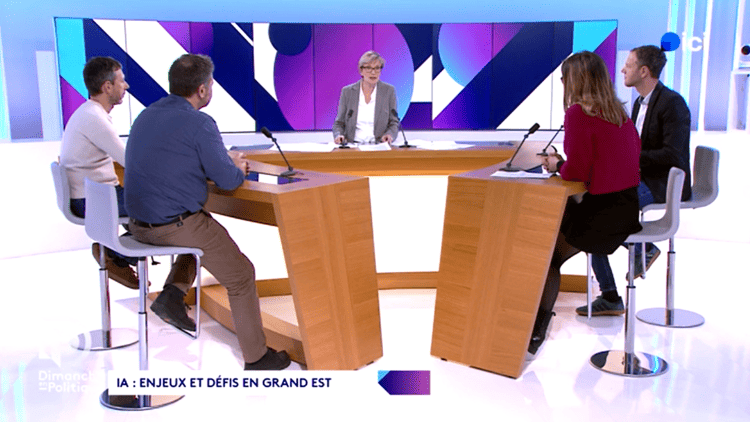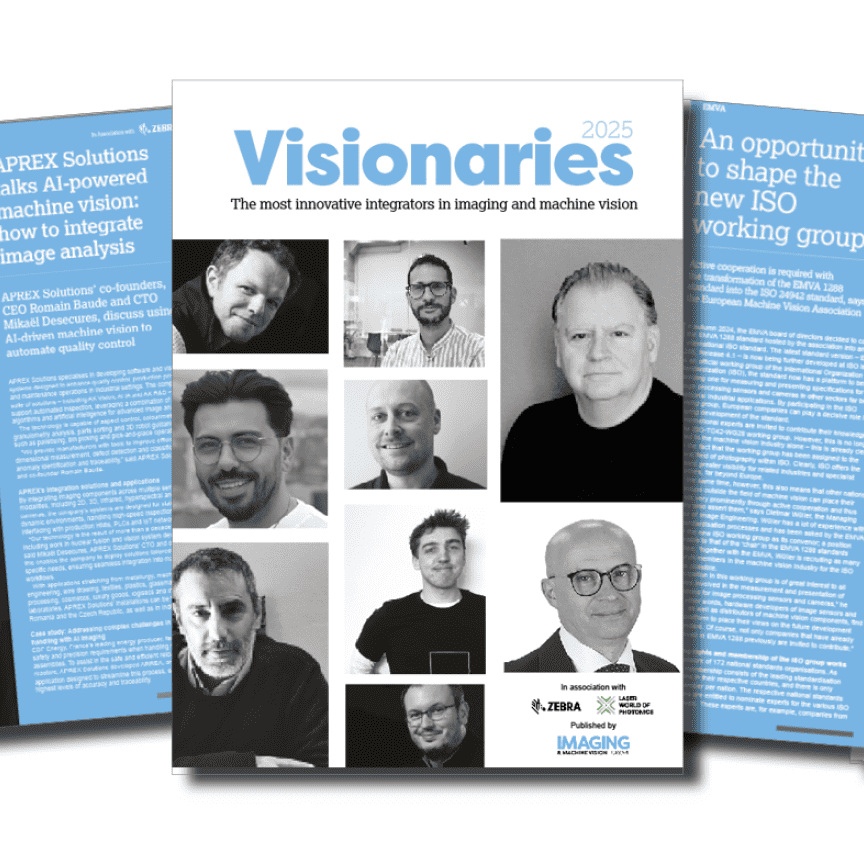
APREX Solutions talks AI-powered machine vision: how to integrate image analysis and robotics for industrial automation
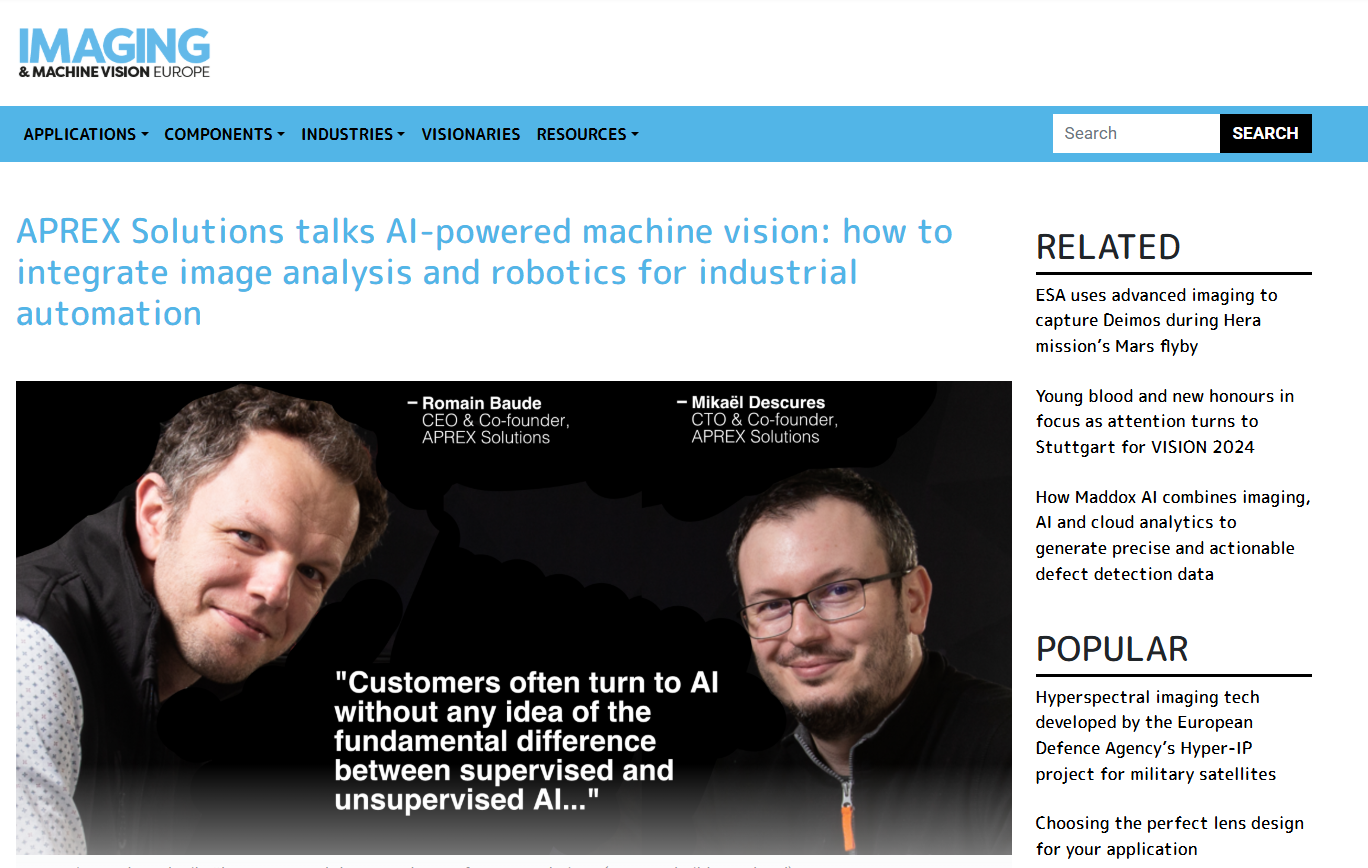
APREX Solutions’ Co-Founders, CEO Romain Baude and CTO Mikaël Desecures, discuss using AI-driven machine vision to automate quality control, and how the integrator is tackling some of the most complex challenges in the industrial sector.
APREX Solutions specialises in developing software and vision systems designed to enhance quality control, production processes and maintenance operations in industrial settings. The company’s suite of solutions – including AX Vision, AI IA and AX R&D – is built to support automated inspection, leveraging a combination of parametric algorithms and artificial intelligence for advanced image analysis.
The technology is capable of aspect control, colourimetry, granulometry analysis, parts sorting and 3D robot guidance for tasks such as palletising, bin picking and pick-and-place operations. “We provide manufacturers with tools to improve efficiency in dimensional measurement, defect detection and classification, anomaly identification and traceability,” said APREX Solutions’ CEO and co-founder Romain Baude.
APREX’s integration solutions and applications
Integrating imaging components across multiple sensing modalities, including 2D, 3D, infrared, hyperspectral and thermal cameras, the company’s systems are designed for static and dynamic environments, handling high-speed inspections and interfacing with production HMIs, PLCs and IoT networks.
“Our technology is the result of over a decade of R&D, including work in nuclear fusion and vision system development,” said Mikaël Desecures, APREX Solutions’ CTO and co-founder. And this enables them to deploy solutions tailored to industry-specific needs, ensuring seamless integration into manufacturing workflows.
With applications stretching from metallurgy, mechanical engineering, wire drawing, textiles, plastics, glassmaking, food processing, cosmetics, luxury goods, logistics and in research laboratories, APREX Solutions’ installations can be found in Europe in France, Romania and the Czech Republic, as well as in India and the US.
Case study: Addressing complex challenges in nuclear fuel handling with AI imaging
EDF Energy, France’s leading energy producer, faces stringent safety and precision requirements when handling nuclear fuel assemblies. To assist in the safe and efficient reloading of nuclear reactors, APREX Solutions developed ARREA, an AI-driven imaging application designed to streamline this process, while ensuring the highest levels of accuracy and traceability.
At the core of EDF’s nuclear reactors are 193 fuel assemblies, each fitted with control clusters that regulate reactor power. Every 18 months, these assemblies must be partially unloaded, transferred and reloaded in a precisely defined order. This ensures proper core function and safety compliance.
"The core of a nuclear reactor is made up of 193 fuel assemblies fitted with clusters to control the reactor's power,” said Desecures. “These assemblies are regularly unloaded and reloaded. To do this, they have to be transferred between the reactor building and the deactivation pool, so that a third of them can be replaced every 18 months. When the reactor is reloaded, the 193 assemblies have to be positioned in a defined order, then their final position in the core has to be identified so that the positioning can be checked to ensure that they comply with safety requirements.”
This highly demanding maintenance process presents significant challenges to nuclear reactor operators including:
- Identification and positioning: Operators must accurately identify the type and placement of each assembly.
- The extreme conditions: The reactor core environment features high turbulence, intense heat, water movement and radiation, which distort imaging data.
- Dimensional accuracy: The assemblies measure 3.5m high and 21.4cm square, with positioning errors needing to remain below 7mm across 15 assemblies.
- Time and human error: Current manual mapping tasks can take operators up to eight hours to complete, introducing subjectivity in assembly verification.
To overcome these issues, EDF required an advanced imaging and AI solution capable of operating in real time, while maintaining precision under the extreme nuclear conditions. In order to meet these needs, APREX Solutions developed ARREA, a vision-based application that integrates optical character recognition (OCR) technology with artificial intelligence for EDF to validate the entire nuclear core assembly mapping quickly and reliably.
“There are a number of OCRs on the market today that can read characters embedded in metal,” said Baude. “For these OCRs to be effective and reliable for reading, the images must be pre-processed to reveal as much of the characters to be deciphered as possible. Image processing algorithms can be time-consuming and do not necessarily allow for real-time rendering, and images from the reactor core are extremely noisy and would require significant adaptive noise reduction algorithms.”
“Our approach was based on artificial intelligence, using neural networks with a high capacity for generalisation. This enabled us to detect numbers and letters, regardless of the type of cluster, orientation, inclination, wear rate and heat flow,” said Desecures.
“At present, mapping at the end of reloading can take operators 8 hours. So ARREA assists by reading the characters, whatever the type of cluster, and the intensity of the thermal and neutron fluxes, so that the cluster identifier can be deciphered in a matter of seconds.”
Meanwhile, another task performed by ARREA is real-time inter-assembly measurement. Usually carried out retrospectively, ARREA uses “artificial intelligence trained to locate the various strategic points of attachment, making it possible to assess the spacing between different assemblies with millimetre precision,” said Desecures. By condensing both the reading of cluster names and inter-assembly measurement into a single task the overall process time is halved.
ARREA meets strict nuclear safety requirements by automatically recording traceability files that indicate the position of each core plan cluster and inter-assembly spacing at the end of each reloading operation. “The software has been well received by operators on site, and the associated time savings have been recognised by all,” said Baude, with inter-assembly measurement tests – and additional tests – already being performed.
But the project is ongoing. “Once it has reached full maturity,” said Baude, “it will have to be validated by the nuclear safety authority to become an official tool that can be deployed across the country.”
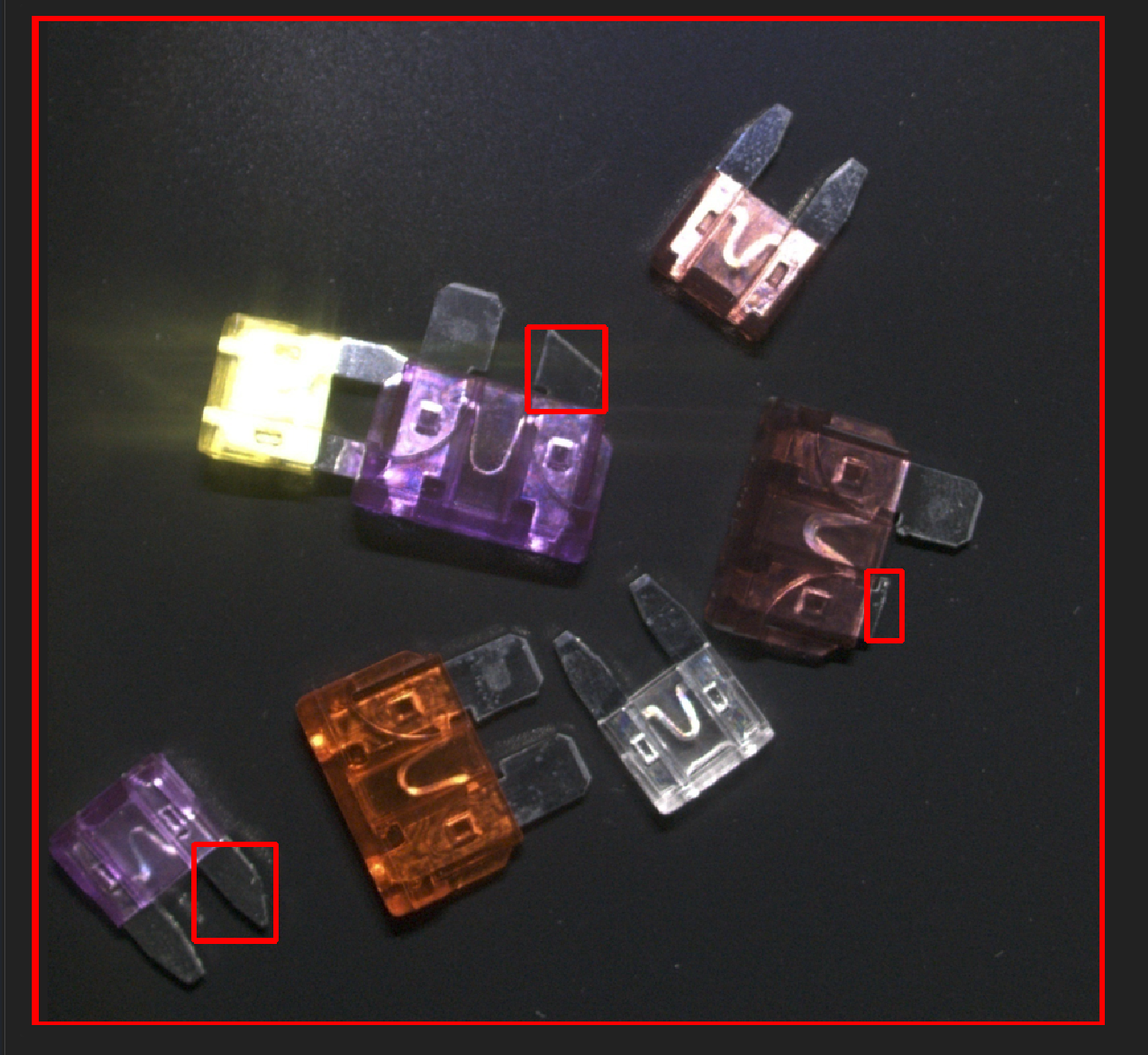
Dealing with high expectations
Dealing with high expectations from clients requires a clear understanding of both the technology's capabilities and the client's needs. In the context of image analysis with AI, there are several methods, each with distinct advantages and limitations.
“When it comes to image analysis using AI, there are several possible methods,” said Desecures. “Each has its advantages and disadvantages. Supervised AI can locate, classify and detect defects, for example, but requires training on a relatively large number of compliant and non-compliant parts. Whereas unsupervised AI can be trained more quickly, using far fewer images and only compliant parts. However, this method cannot classify the anomalies it reports.”
“Customers looking for innovative solutions often turn to AI solutions, without any idea of this fundamental difference, which affects the time taken, the budget and the degree of accuracy in detection. Many even want AI to do colourimetry or measurement, when AI is not designed for that.”
“As a result, they find it hard to assess the solutions offered by the vendors, they don't understand the added value and they risk choosing the lowest bidder rather than the best, to the detriment of the efficiency of their project.”
“To compensate for this, the AX software suite incorporates all image analysis methods: traditional parametric methods, but also the latest generation of AI, constantly maintained at the state of the art. As a result, we are able to cover a wide range of applications and choose the appropriate technology for the customer's needs.”
“In addition, we adopt a pragmatic and objective approach with our customers, in terms of both optics and algorithms. We make our recommendations as straightforward as possible, and argue for a ratio of performance to customer benefit,” said Baude.

Dealing with long lead times
The length of long lead times from hardware suppliers is an issue faced by many in the industrial sector, and can add extra stress and strain on project implementation and delivery. “We have to juggle supply problems such as limited stock, lack of components and various other problems with the delivery requirements of our customers,” said Baude. “This requires a great deal of in-house planning and stock management.”
Key growth sectors for machine vision
“More and more industries are turning to machine vision,” said Baude. “In particular, critical industries such as the automotive, electronics, agri-food and health sectors, but also the entire manufacturing industry more generally.”
The principal reasons for this, Baude identified as:
- Increasing market demands for quality - meaning greater objectivity and reliability is required at the testing phase
- Minimising environmental impact - by reducing the consumption of raw materials and moving quality control further up the production chain
- Automating through recruitment challenges
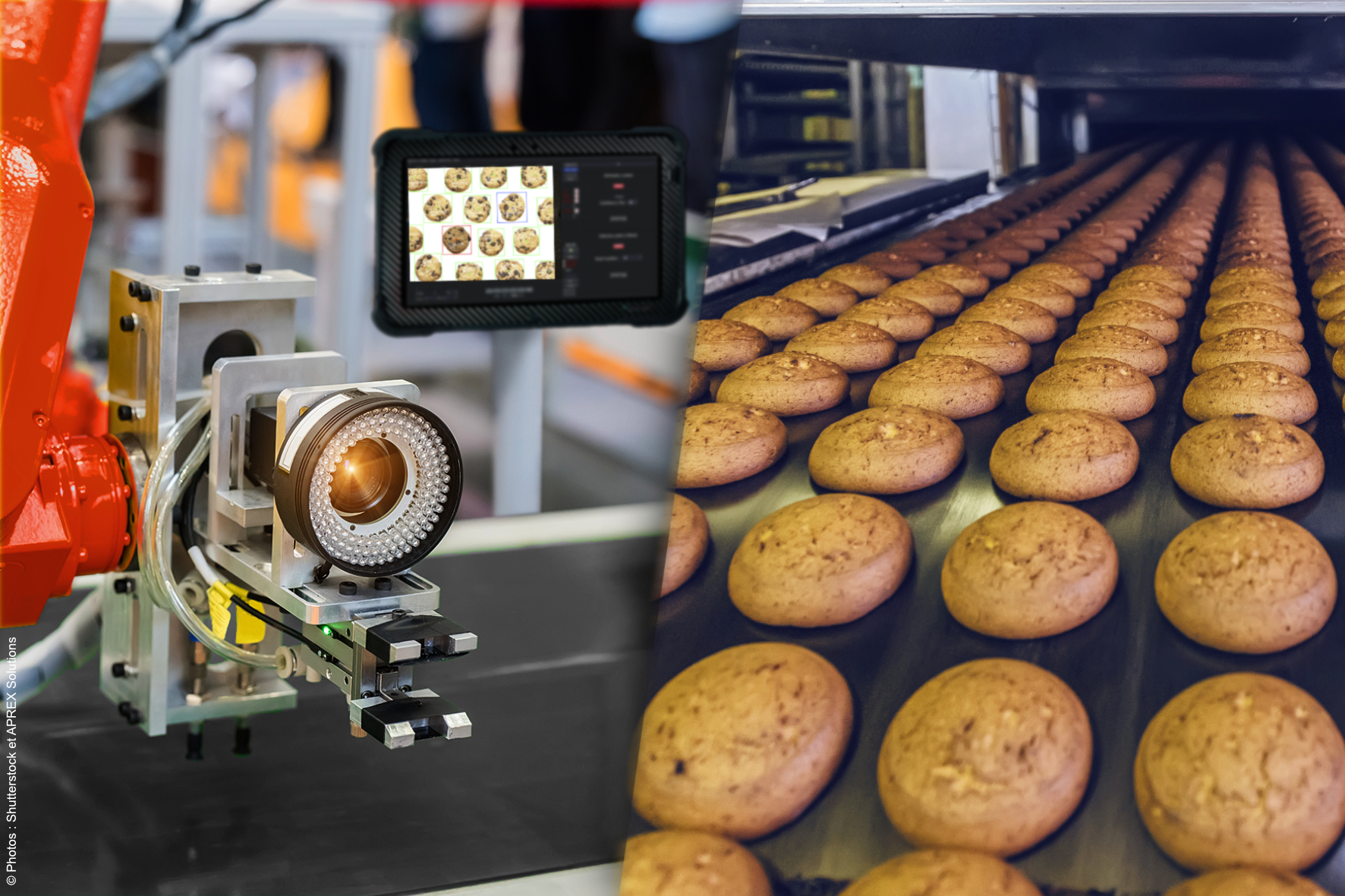
What sets APREX Solutions apart from its competitors?
The ability to develop, deploy and combine several algorithmic technologies – such as parametric, supervised AI, unsupervised AI – and sensor technologies – such as 2D, 3D, matrix, linear, infrared and hyperspectral, helps APREX to differentiate its service offering from competitors.
“From the study of specifications to production line integration, including feasibility studies, the parameterisation of dedicated applications, specific software and hardware sizing, prototyping, commissioning, maintenance in operational condition and even training,” said Baude, “APREX has the ability to support projects from start to finish.”
The company also counts providing “tailor-made responses to multi-sector issues, communicating with production HMIs, PLCs and IoTs and interfacing with ultra-complex environments such as nuclear,” within its skillsets.
“Our highly pragmatic approach [allows us to] tackle projects in a practical and effective way,” said Baude, “while our human approach [means] we can offer customers a close-up understanding of their objectives and the benefits they’re seeking. We are one of the few players in the vision sector, at least in France, to offer all these areas of expertise in a comprehensive software / hardware / service package.”
Our technology is the result of more than 15 years of R&D in the field of nuclear fusion and the development of vision systems,” said Desecures, “We can position ourselves on a wide range of vision projects including measurement (dimensional, colorimetric, granulometric), anomaly detection, defect detection, classification-location, surface appearance code and character reading, with continuous or non-continuous processes, even in highly complex environments such as the ARREA project at EDF power plant.”
How to find new business opportunities as an integrator
As an integrator, it can be hard to convince prospective clients of your worth on a project, rather than ‘DIY’ing the task themselves. From APREX’s point of view, the key to getting around this, is to embed yourself in the industry, learning the common project challenges faced by clients and creating a reputation for solving them.
“Our sales and technical team are very close to the field,” said Baude. “They are constantly on the lookout, meeting prospective customers to discuss their needs in optimising quality control or production monitoring. We also go out to meet them at numerous trade fairs, technology days and network or competitiveness cluster meetings. We’ve just been to SEPEM Nord at Douai, France, and the next one is Global Industrie in Lyon, for example.”
“For us, trade fairs are an opportunity to meet prospective customers and demonstrate our technology and expertise live. Discussions with project developers take place naturally around our demonstrations,” said Baude. “It’s also sometimes an opportunity to be a speaker and present a use case or give a talk on AI for quality control or robot guidance, for example.”
“Today, we enjoy a good reputation for our technology, operational capacity and customer satisfaction,” said Baude. “As a result, our reputation is growing.”

